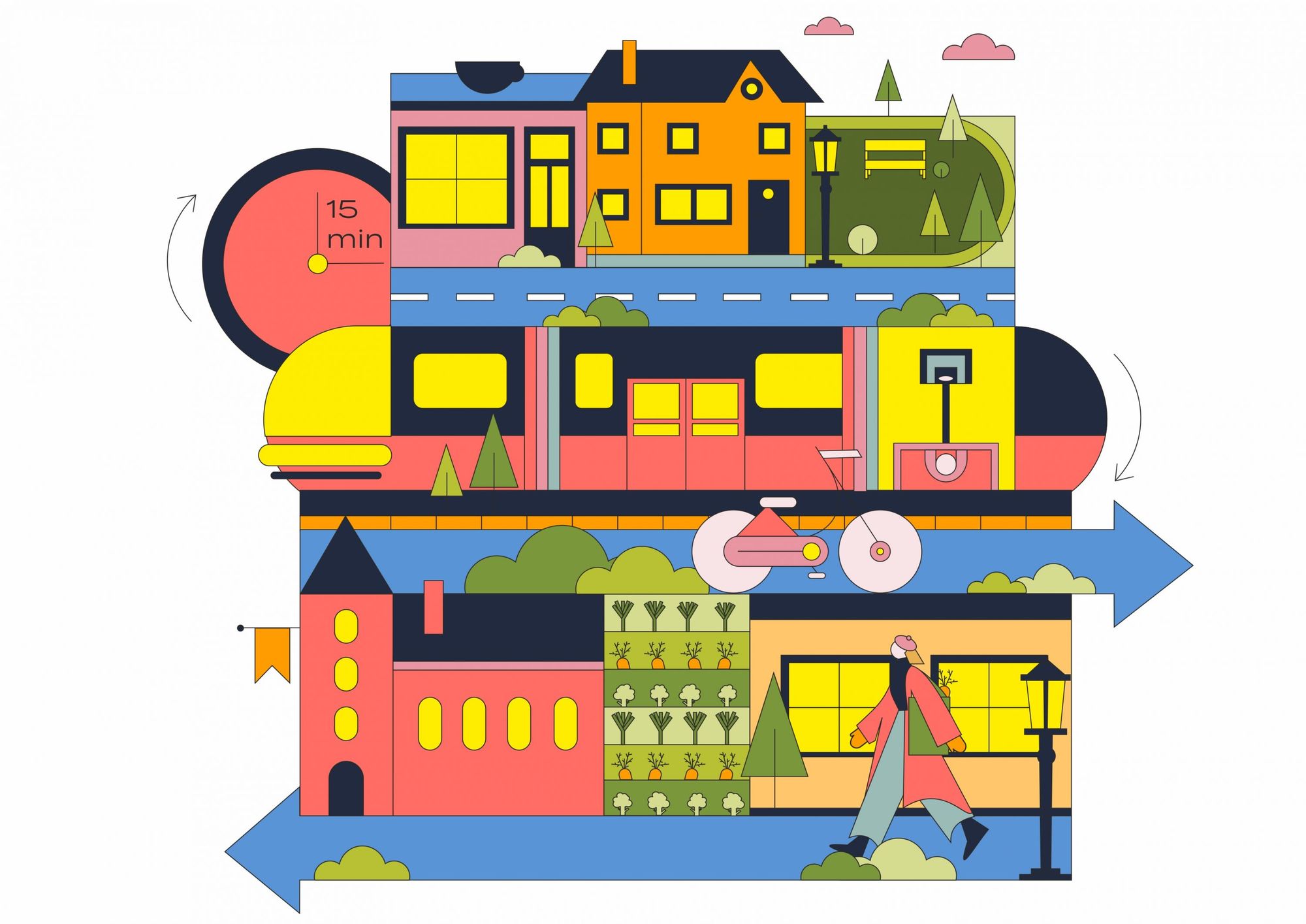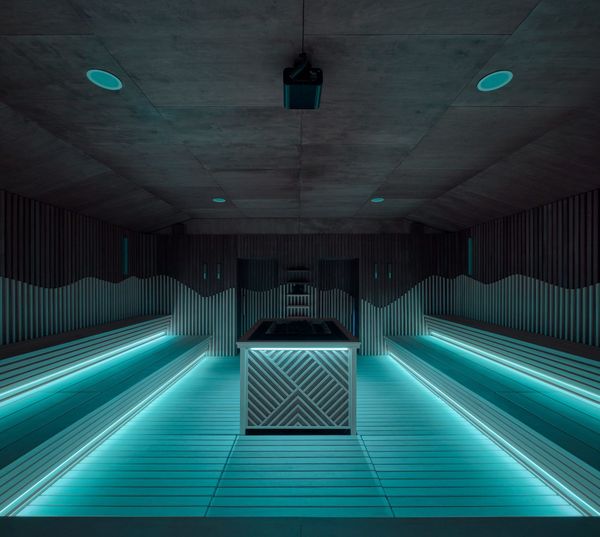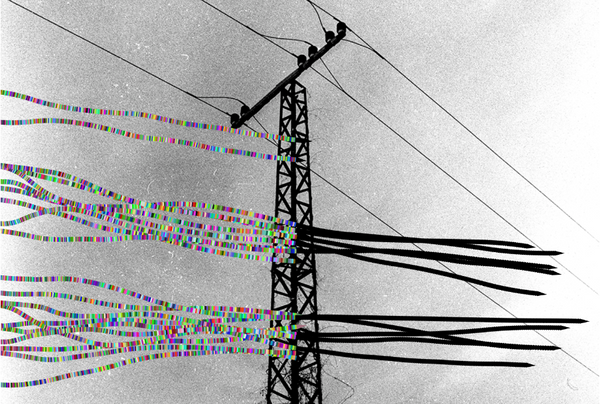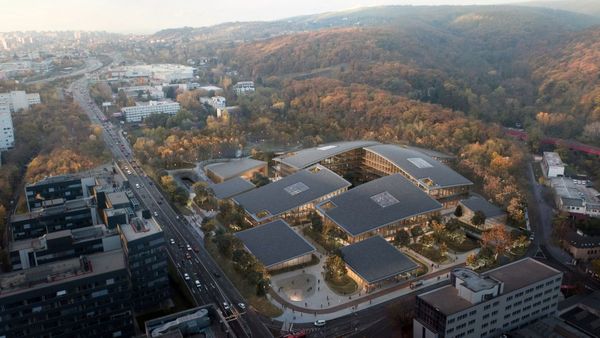Material consumption is no longer in fashion, traveling by air has become outdated, while the traditional urban planning method of people living afar commuting to city centers has also become out of date. We talked to climate scientist Diána Ürge-Vorsatz about climate protection, and the interaction between the individual and the city. Check out the interview!
Diána Ürge-Vorsatz is a climate scientist, professor at CEU’s Environmental Sciences and Policy Department, director of CEU’s Center for Climate Change and Sustainable Energy Policy (3CSEP), and vice-chair of the UN WGIII of the Intergovernmental Panel on Climate Change (IPCC). The work of IPCC was awarded the Nobel Peace Prize in 2007. Furthermore, Diána Ürge-Vorsatz is a panel member of the panel discussion taking place at Planet Budapest 2021, entitled Session 2: Climate Change – From Threats to Opportunities, From Burden to Creation of Added Value.
In order to sacrifice our individual interests for the greater, public good, environmental protection should be encouraged in a way that it becomes fashionable—you pointed out in an interview. Thankfully, using plastic bags when shopping, or deciding against collecting waste separately is becoming increasingly uncool nowadays, and fashion and design brands are also choosing to adopt environmentally friendly solutions in their work, or for example, saying goodbye to the global sales phenomenon of Black Friday. However, can our individual actions really contribute to climate protection on a larger scale?
Yes, absolutely. We make decisions practically every minute that affect the fate of the climate—especially if we’re in an economically better position. In my opinion, it’s those in the top 10-20% that are able to make a substantial change by incorporating these small actions into their lifestyle, however, this alone is not enough, these actions have to turn into daily habits sooner or later. Separate waste collection used to be a big deal, but nowadays it’s the bare minimum: once you get used to something, it’s important to move on and set your sights higher. Of course, you can’t conquer all battles at once, so it’s best to fight one battle at a time and then move on to the next attitude that needs to be changed.
The truth is that most changes in direction can be created through structural changes, however, much depends on the individual. Governments, companies, and large industries alike are the ones that can really make a difference, and they’re are not independent from us: our actions and choices are all signals as to whether or not particular structural changes need to take place. We can do a lot as individuals too—as IPCC says “Every bit of action matters”.
The holiday season is just around the corner, which is known to be a time of overconsumption in many areas. As a climate scientist, how do you stay conscious while preparing and what environmentally-friendly solutions do you use?
These types of questions come up often, but it’s actually quite hard to answer them, as many of the solutions we use come so naturally to us, that we don’t even notice them. However, before I get to the topic of Christmas, I would like to highlight one important area—transport—which contributes to a high volume of emissions. My job means I have to travel a lot, but since the pandemic has come into play, I’ve decided that within Europe, I’ll try to attend events online or if it really can’t be done, then I’ll take the train instead of flying. I really do think that commuting by train is a much more convenient option, and it’s not a sacrificial mode of transport.
In the run-up to the holidays, on the whole, we try to do make our Christmas festivities a little different—it doesn’t revolve around giving things or material gifts, but instead, it’s more about gifting love and thoughtfulness—for example, clearing each other’s tables or putting away someone’s plates in the evening. Another aspect we take into consideration is our Pine tree—I don’t think there’s anything wrong with buying a Christmas tree, in fact, the bigger and older you buy the better, as the more time a tree has spent in a forest, the longer the ecosystem surrounding it has survived and the longer it’s been able to support the lives of others—it’s not an artificial tree that sprouted from a plastic factory. Also, we try to eliminate plastic from our lives as much as we can. This is one of the most difficult things to do, for example with clothes. It’s in these cases where it’s easy to become the victims of greenwashing, for example, if a shoe doesn’t contain animal products, then it’s likely to contain plastic, which is much worse than using the hide skin of a slaughtered cattle. For us, naturally biodegradable materials are also important, and we try not to buy festive decorations, but instead bring them in from the garden—the children love to be involved in the process, and it’s also a better feeling for them when we use something they’ve made by hand, instead of something bought from a shop. Another example is that we don’t wrap presents at Christmas, or if we do, we use reusable bags, with little notes like “Recycling is sexy” and “Take care, so you can pass me on nicely” written on them, and we also highlight how many times the wrapping paper has been reused. It’s essential to make recycling trendy and cool.

If we look beyond our immediate environment, and think on a larger scale, at a city level, then we know that cycling, green spaces, passive houses or 15-minute neighbourhoods all contribute to sustainability. What examples would you highlight where urban planning strategies can alleviate climate change or prepare city dwellers for its consequences?
On the one hand, green surfaces play a very important role. When we talk about green spaces, most people think of manicured lawns—of course, this is still better than paving slabs, as nowadays almost everything is covered in them. However, in terms of climate protection, the planting of deciduous trees and shrubs is not enough: we’re in need of multi-level green belts. Take a look at Japan, they have several micro-forests and jungles being planted in very small urban areas, where they’re trying to create forests with as many ecosystem levels as possible.
Green roofs are another form of green belts, and are most common in Scandinavia and Germany. In Hungary, however, they are still a questionable choice and even divide the experts, as such a surface needs to be properly irrigated, which may require thicker mulch or a stronger roof structure—so its overall costs can easily add up. However, for a commercial building, where the costs are less, it’s highly beneficial for those working there as it creates an enjoyable community space.
Furthermore, as you mentioned, the concept of 15-minute cities is also very important. Berlin, for example, is a very, very liveable city in this respect, where you can practically go anywhere safely by bicycle. In doing so, the city didn’t have to make a huge sacrifice either, and there’s also plenty of green space, which also makes it very liveable in terms of air pollution and climate protection. In Budapest, too, you can see that there’s a very high correlation between a green area and an adjacent area covered with, let’s say, paving stones; on an average day on 31 August, which is not necessarily a hot summer day, there can be a difference of up to 30 degrees between the two adjacent areas. It’s the deciduous trees that absorb carbon dioxide as well as cool the area.
External shading, for example, is something we could learn from the Mediterranean region—anyone who has been there has seen that they use shutters to protect themselves against the heat, not curtains. What’s also very important concerning buildings is that we have to make glass palaces a thing of the past—not only do they have especially high air conditioning and heating needs, but they also act as a huge heat trap during heatwaves. In New York, they banned the building of new glass buildings about five or six years ago, no more can be built, and even the existing ones will have to be slowly transformed or at least become shaded. They’ve learnt that when hurricanes strike or when it comes to any kind of storm, if there’s a power outage, people will simply freeze to death, unlike in a well-shaded passive house, where you can go for days without heating and air conditioning in both the winter and summer. These types of buildings are resilient, which means their defensive capacity is much higher. In the case of passive houses, Brussels has set a good example, with the city council deciding that only new passive houses can be built, and that renovations must upgrade the buildings in question to passive house standards. Once the law came into force, it changed the city incredibly, it went from a very poor building stock to a completely transformed one.
In the case of developing cities, what does such a process look like—and what does becoming sustainable mean?
In the case of developing cities, the 15-minute city concept is becoming extremely important, however it’s much harder to achieve here. If you already have a city centre, the suburbs, and commuter towns, so basically neighbourhoods that are specialised in certain activities, it’s difficult to start making changes. However, when planning cities that are still developing, most of these problems can be avoided: a future based on shared transport and not cars has to be created. By this, I mean the ability to use multiple modes of transport simultaneously and twenty-first century, app-based public transport, but unfortunately, this is not really typical of cities. Helsinki was where the Mobility-as-a-Service (MaaS) was first implemented, as it was a place easy to combine public transport with last-mile access (i.e. a mode to reach the last leg—final destination—of a journey).
Another important aspect for developing cities is to avoid the trap of concrete paving. If we do nothing but build the backlogged urban infrastructure in developing cities, then this will practically eat up half of our remaining carbon costs or carbon budget—without us even having turned on a light or fired up a car engine. In fact, we’re already able to replace a wide range of concrete surfaces, for example, by building skyscrapers and high-tech multi-storey buildings from wood or even with a straw base, without them being fire hazards. It’s important to create as many car parks, access roads, or roads with low traffic volumes without paving them with concrete, and instead covering them with a grid of squares, where weeds and wildflowers can grow in between and absorb sudden floods and waters. This method is already being applied in many places across the globe, and sometimes developing countries are even ahead of the curve in this respect.

The pandemic was a short-lived gain for the environment—and you even pointed out in one of your interviews that it would be a move in a bad direction to expect the short-term effects of the pandemic to solve the problem of pollution. But still, what are the factors that can stay with us and lead us towards a greener economy and sustainable cities?
I think this pandemic is one of the biggest opportunities of the century, in terms of being able to accelerate a lot of the changes that we were going to have to make anyway. One of these, for example, is the acceleration of digitalization—doing business, holding presentations, or dealing with matters online is something we increasingly dare to do. However, we used to be unwilling or unable to accept digital alternatives—but that’s changed—now we tend to question whether we need to spend the time or money to be present in person.
Another important factor is rethinking urban fabric in its entirety: there was a period when we gave more space to cycling and walking, and difficulties emerged for offices— we realised that the office is no longer the most important operating model.
This new direction has given us the opportunity to give back public spaces—which at the moment are either car parks or huge areas covered with roads—to cycling and walking, and to parks. If you look at a city from above, a large part of its public space is effectively owned by cars, and this is something we have begun to question.
Furthermore, one of the biggest opportunities after digitalization, is the transformation of transport—and to be specific, the transformation of long-distance transport. During the pandemic, if we wanted to go on holiday, instead of flying faraway, we had to settle for nearby destinations, and as a result, I think we learned to appreciate them a little better. Many of us have realised that we don’t need to go to the other side of the world to have a good time; there are many quality leisure options at home too, so we’ve reassessed our relationship with place. Also, I think these changes can create a change in attitudes in the long run too, if we build on them, for example, supporting domestic tourism, or making cycling and kayaking more accessible, and so on.
The Paris Agreement (an international treaty on climate change, adopted in 2015) calls for global warming to be kept below 1.5 degrees Celsius. To achieve this goal, what should an ideal, environmentally sustainable city look like in 2050? What will be the new normal?
On the one hand, there will be plenty of green spaces, with the majority of roads and parking areas going back to being green spaces, and multiple fast and slow cycle lanes will be implemented. For those who can’t or don’t want to cycle, the rest of the transport will be solved by the previously mentioned shared transport systems. This means, for example, that with the help of an app we can simply type in where we want to go, and how and with whom we want to reach a specific destination. So, as well as everyone being able to get from door to door, we’ll also be able to eliminate congestion and air pollution in cities, as everyone’s transport needs will be resolved from just three percent of the total number of vehicles.
In addition to green spaces, the number of community gardens will be on the rise, as well as the growth of urban agriculture—and we’re actually not that far off from this, for example my brothers in Berlin, who live in the city centre, have the opportunity to grow crops in raised beds close to their homes. The advantage of community gardens is that they contribute to urban biodiversity, and by doing so, to liveability, as well as strengthening communities, as people feel better living as city dwellers as a result.
In terms of buildings, all of them will be zero-energy buildings, meaning that they’ll generate their own energy. However, this doesn’t mean that their roofs, windows or walls will be filled with solar panels, but instead, the panels will be integrated into the roof tiles, cladding or insulation. This process means that all buildings will be energy efficient, energy supply and logistics will be optimized, and as a result, everyone’s overhead costs in turn will be low or almost zero, which will also have a beneficial social impact.
Overall, I think if these changes are implemented cleverly, our cities will be far more liveable. There’s no need for futuristic thinking or to associate with a city on Mars. Of course, we can, but we don’t need to: with smart planning, determination, and already existing, affordable technologies available, it’s possible to create zero-energy cities.


The new Infinit wellness offers a transcendent experience | Studio Reaktor

Can cryptoart be sustainable? | NFT DEB










